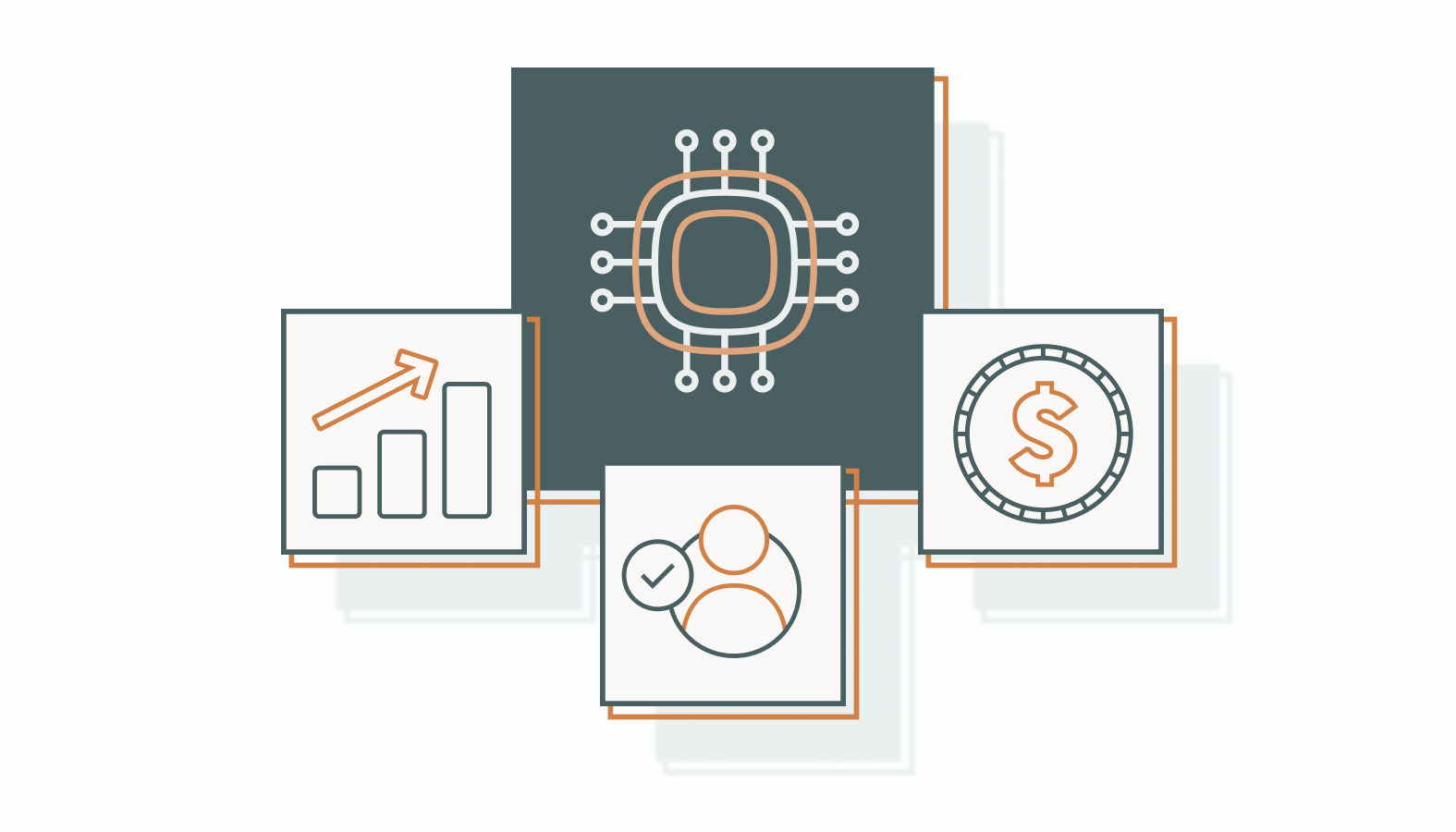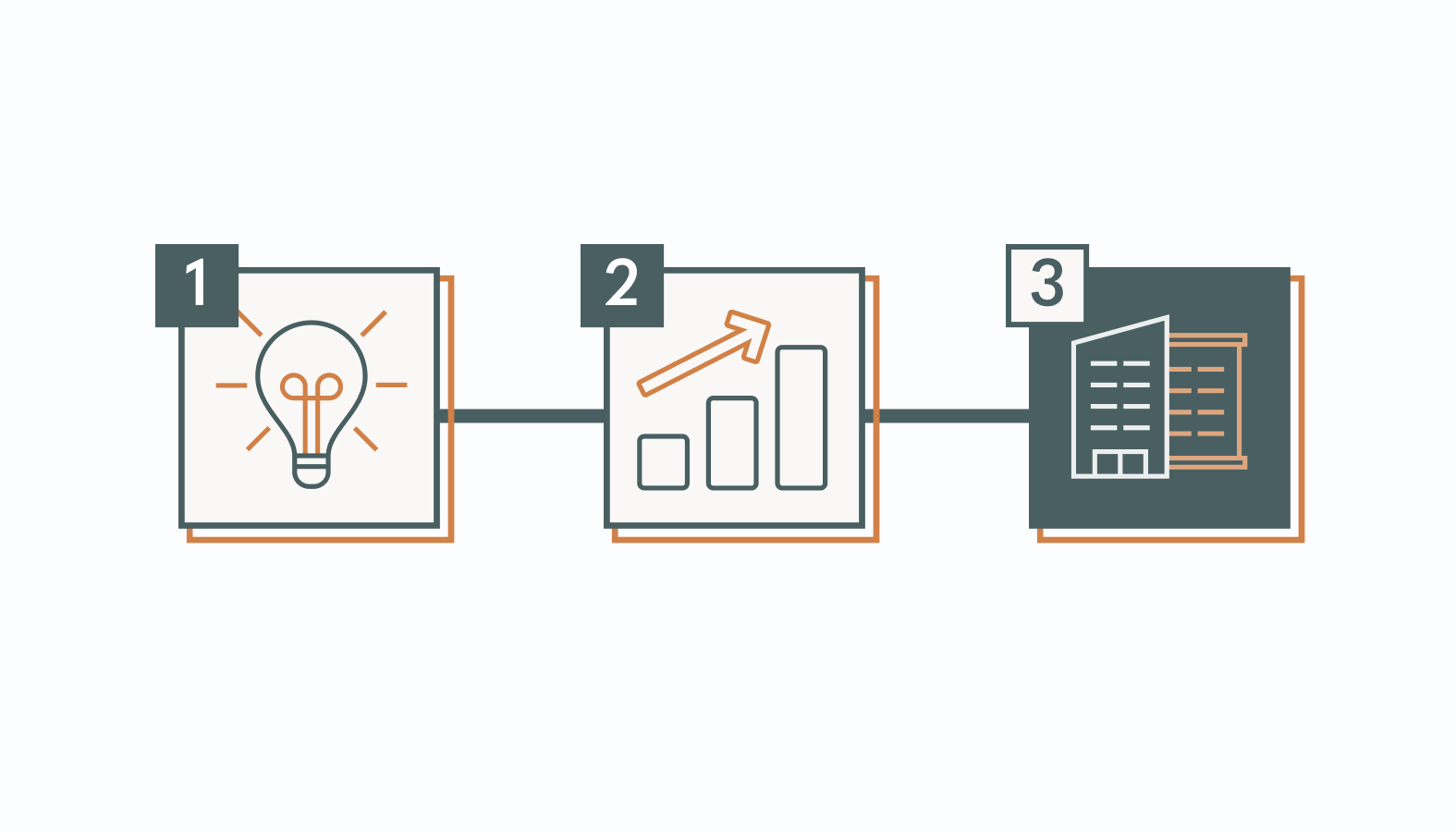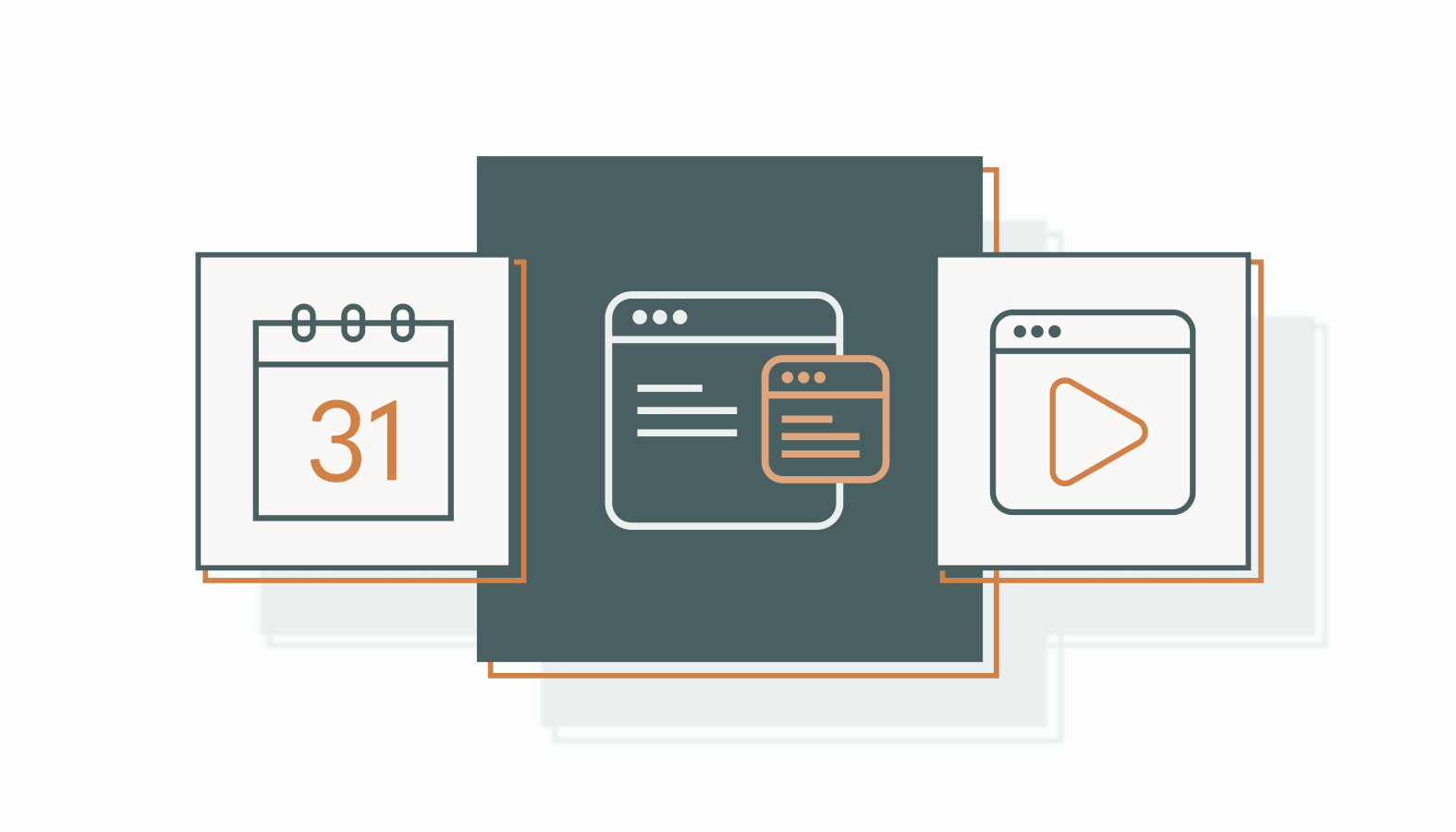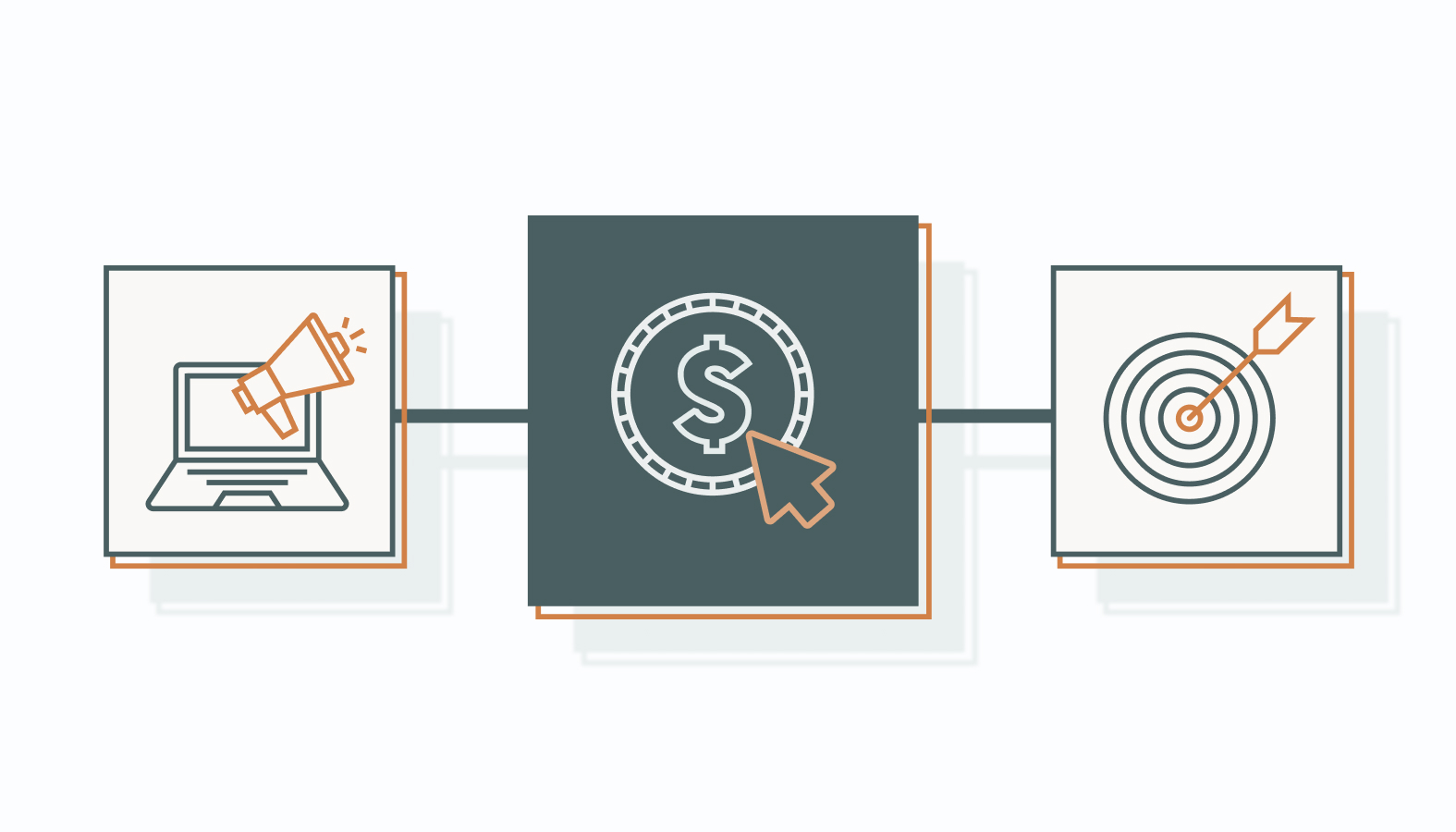B2B sales in the digital age? Software as a service (SaaS) keeps businesses ahead of the curve.
Forget dusty old marketing tactics and one-size-fits-all brochures. Today’s tech-savvy B2B buyers crave fresh, relevant content. To achieve this, B2B SaaS companies need cutting-edge strategies that understand buyer psychology.
Ready to build lasting customer love and skyrocket your SaaS offering?
Our guide unlocks the secrets to long-term relationships and sustainable growth. Targeted email campaigns, personalized content, and killer social media engagement are the winning combo that gets your message in front of decision-makers in a way that sticks.
Understanding the B2B SaaS Buyer’s Journey
B2B SaaS buyers have a buying journey. Smart marketing anticipates their needs with targeted solutions at each stage.
Awareness and Recognition of Need
In the Awareness stage, buyers wake up to a pain point (a specific problem or challenge that the customers faces). They might not have a solution in mind yet, but your first impression can make or break things. This is your chance to shine.
Here’s how to grab buyer attention:
- Informative Content: Craft blog posts, downloadable guides, or webinars tackling industry pain points. Offer valuable insights, not just sales pitches.
- Thought Leadership: Share your expertise on social media like LinkedIn and Twitter. Become a trusted resource and a leader in your field.
- Value-Driven Approach: Focus on helping, not just selling. Let potential customers discover how your B2B SaaS can fix their problems.
This stage aims to solve buyers’ current pain now, so they’ll be itching to hear your solution later.
Consideration of Options
Buyers in the Consideration stage are now hunting for answers. Here’s how to convince them you’ve got the ultimate fix.
- Targeted Marketing: Reach customers searching for solutions like yours.
- Build Trust: Share success stories (case studies) and offer free trials or demos.
- Unique Selling Points: Highlight what makes your B2B SaaS special and how it solves problems better than competitors (detailed guides or comparisons).
- Tailored Message: Skip generic pitches. Instead, make it personal and focus on their specific needs and challenges.
Flaunt your expertise with killer content that makes you the clear winner over the competition.
Decision and Purchase
In the Decision stage, buyers are ready to pull the trigger, but last-minute doubts are lurking. Here’s how to win their confidence (and that sweet, sweet sale):
- Clear Communication: Address concerns directly. Explain how your B2B SaaS solves customers’ pain points with clear, concise language. Use testimonials and case studies to showcase similar success stories.
- Frictionless Buying: Make buying easy with transparent pricing, a user-friendly checkout process, and free trials or demos.
- Negotiation & Support: Be flexible on pricing and customization. Offer clear contracts and provide excellent post-sale support to convert buyers into loyal customers.
Turn hesitant buyers into raving fans with trust-building tactics, frictionless experiences, and personalized offers.
Onboarding and Adoption
In the Onboarding stage, you’ve landed a new customer. Now, keep them happy with a smooth onboarding:
- Easy Learning: Clear instructions, tutorials, or one-on-one training sessions get them started fast.
- Help When Needed: Be proactive in finding and fixing issues to avoid roadblocks.
- Set Them Up for Success: Like a dedicated account manager, offer ongoing support to ensure a positive experience and long-term use.
First impressions matter! A stress-free onboarding sets the stage for happy, loyal customers.
Retention and Expansion
The Retention phase is all about keeping your customers happy. Let’s turn them into a BFF (Best Friend Forever) with our customer retention techniques.
Here’s how to keep them loving your B2B SaaS.
- Keep it New: Regular updates with fresh features and improvements show you’re invested in their success.
- Always Available: Offer ongoing support through resources (FAQs) and helpful customer service reps.
- Listen and Adapt: Gather feedback to understand customer needs. Consider upselling or cross-selling additional services or features they might value. Addressing their evolving needs, avoid churn (or the number of customers who stop using a product).
Advocacy
In the Advocacy stage, turn happy customers into your biggest fans.
Here’s how to create a legion of brand champions who rave about your B2B SaaS.
- Build a Community: Create a space for them to connect and share experiences.
- Encourage Feedback: Positive testimonials and reviews build trust with potential customers.
- Amplify Their Voice: Share user-generated content on various platforms to showcase their success.
Loyal fans promote your B2B SaaS organically. Word-of-mouth marketing like this fuels business growth without spending a cent.
Now, let’s set achievable marketing goals and make them happen.
Setting and Achieving B2B SaaS Marketing Goals
Stop flying blind in the crowded B2B SaaS market. Skip the guesswork and level up with data-driven goals that fuel real growth. These aren’t just vanity metrics – we’re talking about building a loyal customer base that keeps your business thriving for the long haul.
B2B SaaS thrives on repeat business, so these goals focus on creating customer champions who love your product.
Understanding the SaaS Business Model
B2B SaaS isn’t like selling widgets. Here’s the biggest difference:
- Traditional software leads to one-time sales.
- B2B SaaS retains happy customers who pay you again and again.
This means your marketing efforts must focus on building a loyal fan base that keeps coming back.
B2B SaaS is perfect for super-efficient scaling. Unlike traditional models burdened by physical production costs, acquiring new customers in SaaS is a whole different ball game. Imagine scaling your business without the headache of cranking out more widgets or managing a massive inventory.
Recurring Revenue Focus
B2B SaaS is all about repeat business. Your marketing needs to turn customers into fans who pay you month after month (MRR=Monthly Recurring Revenue) or year after year (ARR=Annual Recurring Revenue).
Here’s how to keep them happy and using your software for the long haul:
- Customer Education: Teach them everything. The more they know, the more value they see and the less likely they are to cancel.
- Fresh Features: Keep things exciting with regular updates and improvements. Show them you’re constantly innovating and keep them engaged.
- Loyalty Love: Reward your happy customers for sticking with you. Discounts, freebies, and special perks go a long way.
Focus on building solid relationships, securing renewals, and creating a predictable recurring revenue stream.
Customer Lifetime Value (CLV)
A customer singing your B2B SaaS praises for years is a customer with high CLV (customer lifetime value).
Here’s how to make customers love you forever:
- Personalized Experience: One-size-fits-all approaches won’t work–B2B SaaS is all about customization. Offer tailored onboarding, suggest features they’ll actually use, and deliver targeted content. The more they feel your solution is built for them, the longer they stick around.
- Tiered Pricing: Provide different subscription plans with features at various price points. This lets customers choose a plan that fits their needs and budget. As their needs grow, they’ll be happy to upgrade, and you’ll benefit from the CLV boost.
- Cross-Selling Magic: Recommend other products that complement what they already use. For example, offer a chat app that integrates with your project management software. By suggesting relevant solutions, you become their one-stop shop, increase their CLV, and keep them hooked on your ecosystem.
High CLV isn’t just about bragging rights. It translates to lasting customer relationships, more product upgrades, and a legion of loyal fans. The reward? A predictable and healthy revenue stream that keeps your business singing.
Customer Acquisition Cost (CAC)
High customer churn (customers leaving) can be a profit killer for B2B SaaS businesses. That’s why understanding Customer Acquisition Cost (CAC) and Lifetime Value (LTV) is crucial for sustainable growth.
- CAC: This metric represents the total cost of acquiring a new customer. It factors marketing and sales expenses like advertising spending, content creation, sales salaries, and commissions. By tracking CAC, you can determine how much you spend to acquire each customer.
- LTV: This metric represents the total revenue a single customer generates for your business over their entire relationship with you. It considers factors like subscription fees, potential upsells, and the average customer lifespan. Knowing your LTV helps you understand the long-term value of your customer base.
Ideally, your LTV should be significantly higher than your CAC. It ensures you’re generating enough revenue from each customer to cover the cost of acquiring them and still turn a profit.
Here’s how to achieve a strong LTV: CAC ratio:
- Target the Right People: Don’t waste time on unqualified leads. Focus on attracting those who are a good fit for your product. This will save money and boost long-term value.
- Content is King: Attract potential customers with valuable, free content like blog posts, webinars, or social media. It’s more cost-effective than traditional advertising.
- Nurture Those Leads: Once your leads show interest, keep them engaged with targeted communication and educational resources. This helps turn them into loyal, long-term customers with high LTV.
Master the customer math. Optimizing CAC and CLTV leads to sustainable growth. Think of it as getting high-value customers at a steal – more bang for your buck, happy customers, and a B2B SaaS business on rocket fuel.
Growth Phases Consideration
The B2B SaaS customer journey is like a stage play. Each act requires a different approach.
Let’s explore how to tailor your marketing goals for a standing ovation at every stage.
Startup Phase
Imagine you have a fantastic B2B SaaS product idea, but nobody knows yet.
During this startup stage, your marketing goals should focus on getting your name out there and proving your concept has value.
Ideally, your marketing activities should focus on:
- Getting Your Name Out There: Run brand awareness campaigns to make potential customers aware of your company and product. This could involve online ads, social media marketing, or creating free content like blog posts or infographics.
- Becoming an Expert: Position yourself as an industry leader. Share your knowledge through articles, webinars, or speaking at events. Build trust and credibility with potential customers.
- Finding Early Adopters: Secure a small group to try your product before launch (beta program). Their feedback helps improve your product and ensures it solves real problems.
These strategies help validate your product and set the stage for future success.
Growth Phase
In this stage, your B2B SaaS product is gaining traction, and you’re starting to see some success.
Now, you want to take things to the next level and pursue advanced marketing strategies:
- Smooth Sales Funnel: Marketing helps identify roadblocks and streamline the path from awareness to paying customers.
- Happy Customers = More Money: Don’t neglect existing clients. Keep them engaged with helpful content, events, or loyalty programs. Happy customers stick around and bring in more revenue.
- Scale It Up: Reach a wider audience with scalable channels like content marketing, SEO, or PPC ads.
Throughout the growth phase, your goal is to nurture existing customers, optimize your sales funnel, and leverage scalable marketing channels to propel your B2B SaaS product to the next level.
Maturity Phase
During this stage, a B2B SaaS product is already well-established and successful. Refocus marketing plans by staying ahead of the competition and ensuring long-term success.
Here’s how marketing strategies can help:
- Expand Your Market: Explore new customer segments (different industries or sizes) and tailor your product to their needs.
- Partner Power: Team up with complementary businesses to reach a wider audience and offer a more complete solution.
- Customer Love Don’t forget your existing fans. Invest in customer success programs (training, support resources, user communities) to keep them happy and loyal. Customers who love you renew and become brand advocates.
- Product Innovation: Stay relevant by expanding your product with new features or functionalities that address current customer needs. Marketing can help launch these new offerings.
Focusing on these strategies will allow you to explore new markets, build strong partnerships, solidify customer loyalty, and diversify your product offering.
Setting Realistic Goals
Setting great marketing goals is like shooting for the moon but with one foot on the ground.
Be ambitious but realistic. Don’t aim for the impossible.
Here’s how to set goals that get results:
Data Analysis
B2B SaaS marketing thrives on data. Analyze past campaigns to see what content clicked, what ads converted, and what fell flat.
Research your target market and industry trends to make smarter marketing decisions.
Understanding your ideal customer and the competitive landscape is crucial for setting realistic goals, for customer growth, market share domination, or brand awareness building.
SMART Goal Framework
With historical data and market research, you can set SMART goals with clear targets.
SMART stands for:
- Specific: Your goals shouldn’t be vague wishes. Be clear about precisely what you want to achieve. For example, instead of saying, “Increase brand awareness,” you could say, “Increase website traffic by 20% in the next quarter.”
- Measurable: How will you know if you’re reaching your goals? Define metrics you can track, like website traffic, conversion rates, or social media engagement.
- Achievable: Be ambitious but also realistic. When setting goals, consider your resources, budget, and market conditions.
- Relevant: Your goals should align with your overall B2B SaaS business objectives and target the right audience.
- Time-bound: Set a specific timeframe for achieving each goal, which creates a sense of urgency and helps you track progress over time.
Use SMART goals to track progress and get real results for your B2B SaaS marketing.
Alignment with Business Objectives
Imagine your B2B SaaS company as a ship.
Marketing is the engine, but it needs to follow the captain’s (business strategy) orders to get anywhere.
Here’s how aligning marketing goals with your business strategy steers you toward success:
- Focus & Teamwork: When everyone’s on the same page, marketing isn’t random acts. Campaigns directly support the company’s goals.
- Strategic Initiatives: Marketing becomes strategic, not just about catchy ads. Aligned campaigns target the right audience and achieve specific goals to fuel the company’s vision.
- One Big Vision: Aligning marketing goals with the business strategy unites the entire company. Everyone works together to achieve the big picture.
Stop the internal confusion–team alignment helps in dominating the competitive SaaS landscape. It means everyone’s on the same page, focused, and ready to crush your goals.
Resource Assessment
Don’t plan a Super Bowl ad if your budget is for social media.
Here’s how to set achievable goals:
- Budget Check: Marketing costs money. Be honest about what you can spend on campaigns, tools, and people. Don’t set goals that require a lottery win.
- Team Power: Do you have a marketing team or freelancers with the skills and experience to achieve your goals? Consider any gaps you might have and factor those in when setting goals.
- Tech Toolbox: Do you have the marketing tools and software to run your campaigns effectively? Some marketing tools can be expensive, so factor software costs into your planning.
- Time Crunch: Be realistic about the time you can dedicate. Don’t set goals that require nights and weekends forever or more time than you or your team have available.
Understanding your resources (budget, team, tech, time) allows you to set achievable marketing goals.
Reaching these goals builds momentum, keeps your team motivated, and leads to long-term marketing success.
Feedback Loops and Adaptation
Imagine you set some great marketing goals, but a few months later, the market landscape has completely changed. Your perfect goals might not work tomorrow.
Here’s how to stay agile:
- Regular Performance Reviews: Don’t wait until the end of the year to see how your marketing is doing. Schedule monthly or quarterly reviews to see if you’re hitting your goals and facing any hurdles. Are you on track? Are there any roadblocks?
- Market Trend Analyses: The SaaS industry changes quickly. Stay on top of industry trends. If a new competitor pops up or a customer needs change, adapt your marketing goals to stay ahead.
- Customer Feedback: Get your customers’ feedback through surveys, interviews, or social media. Are your messages on target? Are you reaching the right people? Customer insights can refine your goals and keep your marketing relevant.
Using feedback loops continuously improves and adapts your marketing goals as the SaaS market evolves.
Creating a Powerful Marketing Plan for B2B SaaS Companies
B2B SaaS success isn’t a one-trick pony. The winning formula is a potent marketing mix of content marketing, paid advertising, and email marketing.
This multi-channel approach keeps your brand message consistent, leverages each channel’s strengths, and ultimately drives more leads, conversions, and happy customers.
The B2B SaaS Content Marketing Engine: Generate Leads & Drive Sales
B2B SaaS marketing thrives on killer content. It positions you as an expert, educates potential customers, and keeps them engaged throughout their buying journey.
Developing a Content Calendar
When planning a B2B SaaS content calendar, map your content to business goals. Here’s how:
- Business Goals First: Identify your top priorities (e.g., brand awareness or lead generation). What do you want to achieve with your content marketing efforts?
- Customer Focus: Don’t just talk about yourself. Craft themes around your ideal customer’s pain points and interests. What keeps them up at night? What questions do they have?
- Regular Rhythm: Set a publishing schedule and stick to it. Consistency keeps your audience engaged. Aim for a schedule that works for your resources, but be present enough to stay top-of-mind.
- Content Creation Crew: Allocate resources to create and promote your content. Hire internal marketing teams, freelance writers, or industry influencers to develop high-quality content.
Don’t just publish content for the sake of it. All successful content marketing campaigns begin with a well-planned B2B SaaS content calendar.
If done right, these strategies attract high-quality leads and drive sustainable growth for your B2B SaaS business.
Types of SaaS-Focused Content
Companies can pick from this content toolbox to engage their B2B audience:
- Blog Posts: Keep your audience informed with regular updates on industry trends, how-to guides, and thought leadership pieces.
- Whitepapers and Ebooks: To showcase your expertise, dive deep into specific challenges, and publish solutions with detailed reports.
- Case Studies: Build trust and credibility with real-world examples of your product.
- Videos: Engage your audience with product demos, customer testimonials, or bite-sized educational content.
Remember, each content type targets a different stage of the buyer’s journey, from initial awareness to final decision. The right mix keeps your audience engaged throughout.
Driving Leads with Targeted Paid Advertising Strategies
Paid ads target the right audience with laser focus and supercharge your marketing efforts.
Google and Social Media Ads
Target the right audience across Google and social media to generate high-quality leads and maximize return on investment (ROI). Here’s how:
- Clear Goals: Set your sights on what you want to achieve (e.g., website visits, free trial sign-ups).
- Segmented Audiences: Tailor your message to specific buyer profiles for maximum impact.
- Compelling Ads: Craft creative ads that grab attention and speak directly to your ideal customer.
- Flexible Budgets: Optimize your spending based on real-time performance data. The more you learn, the more leads you generate.
Retargeting Strategies
Ever lose a website visitor just as they were about to convert? Retargeting lets you bring them back with paid ads. It is possible with:
- Website Cookie Tracking: These little code snippets follow user behavior, helping you understand what piqued their interest and why they might not have converted (e.g., abandoned shopping cart).
- Targeted Ads: Craft compelling ads that address those potential roadblocks. They may need a special offer or a reminder of your product’s benefits.
- Staggered Approach: Don’t bombard your audience. Space out your retargeting efforts to avoid ad fatigue. A well-timed reminder can spark their interest again and bring them back for another look, ultimately boosting your conversion rates.
With retargeting, you can turn curious website visitors into paying customers.
The Role of Email Marketing and Automation
Forget chasing leads all over the web. Personalized email campaigns keep potential and existing customers engaged and returning for more.
Effective B2B SaaS email marketing goes beyond simple broadcasts; it’s about nurturing relationships that convert to happy, paying customers.
Crafting Effective SaaS Email Campaigns
Winning B2B SaaS emails have catchy headlines, bite-sized content, and laser focus. Here’s how to write them:
- Subject lines that hook: Keep it short, clear, and intriguing to avoid inbox oblivion.
- Visually appealing and digestible: Break up text with images or GIFs. Make it scannable and easy to understand.
- Targeted communication: Segment your list, then tailor content to specific user interests and behaviors for maximum impact.
Email Automation Workflows
Imagine sending warm welcome sequences to new subscribers, drip campaigns packed with valuable content that nurtures leads, and automated milestone emails celebrating customer achievements or anniversaries.
You can set up all these emails once and watch as the power of email marketing automation converts buying customers.
Email automation also personalizes communication at scale. It keeps your leads engaged and drives them down the sales funnel. To do this, you have to:
- Map the Customer Journey: Identify critical touchpoints throughout the buyer’s experience (e.g., sign-up, free trial, product milestone).
- Trigger Targeted Emails: Leverage customer behavior. Use it to send relevant messages at the perfect moment, whether a timely nudge during a free trial or a celebratory email after a major product win.
- Analyze & Refine: Don’t set it and forget it entirely. Track how your automated workflows perform and adjust to keep them humming and driving results.B2B sales in the digital age? Software as a service (SaaS) keeps businesses ahead of the curve.Forget dusty old marketing tactics and one-size-fits-all brochures. Today’s tech-savvy B2B buyers crave fresh, relevant content. To achieve this, B2B SaaS companies need cutting-edge strategies that understand buyer psychology.Ready to build lasting customer love and skyrocket your SaaS offering?Our guide unlocks the secrets to long-term relationships and sustainable growth. Targeted email campaigns, personalized content, and killer social media engagement are the winning combo that gets your message in front of decision-makers in a way that sticks.
Understanding the B2B SaaS Buyer’s Journey
B2B SaaS buyers have a buying journey. Smart marketing anticipates their needs with targeted solutions at each stage.
Awareness and Recognition of Need
In the Awareness stage, buyers wake up to a pain point (a specific problem or challenge that the customers faces). They might not have a solution in mind yet, but your first impression can make or break things. This is your chance to shine.
Here’s how to grab buyer attention:
- Informative Content: Craft blog posts, downloadable guides, or webinars tackling industry pain points. Offer valuable insights, not just sales pitches.
- Thought Leadership: Share your expertise on social media like LinkedIn and Twitter. Become a trusted resource and a leader in your field.
- Value-Driven Approach: Focus on helping, not just selling. Let potential customers discover how your B2B SaaS can fix their problems.
This stage aims to solve buyers’ current pain now, so they’ll be itching to hear your solution later.
Consideration of Options
Buyers in the Consideration stage are now hunting for answers. Here’s how to convince them you’ve got the ultimate fix.
- Targeted Marketing: Reach customers searching for solutions like yours.
- Build Trust: Share success stories (case studies) and offer free trials or demos.
- Unique Selling Points: Highlight what makes your B2B SaaS special and how it solves problems better than competitors (detailed guides or comparisons).
- Tailored Message: Skip generic pitches. Instead, make it personal and focus on their specific needs and challenges.
Flaunt your expertise with killer content that makes you the clear winner over the competition.
Decision and Purchase
In the Decision stage, buyers are ready to pull the trigger, but last-minute doubts are lurking. Here’s how to win their confidence (and that sweet, sweet sale):
- Clear Communication: Address concerns directly. Explain how your B2B SaaS solves customers’ pain points with clear, concise language. Use testimonials and case studies to showcase similar success stories.
- Frictionless Buying: Make buying easy with transparent pricing, a user-friendly checkout process, and free trials or demos.
- Negotiation & Support: Be flexible on pricing and customization. Offer clear contracts and provide excellent post-sale support to convert buyers into loyal customers.
Turn hesitant buyers into raving fans with trust-building tactics, frictionless experiences, and personalized offers.
Onboarding and Adoption
In the Onboarding stage, you’ve landed a new customer. Now, keep them happy with a smooth onboarding:
- Easy Learning: Clear instructions, tutorials, or one-on-one training sessions get them started fast.
- Help When Needed: Be proactive in finding and fixing issues to avoid roadblocks.
- Set Them Up for Success: Like a dedicated account manager, offer ongoing support to ensure a positive experience and long-term use.
First impressions matter! A stress-free onboarding sets the stage for happy, loyal customers.
Retention and Expansion
The Retention phase is all about keeping your customers happy. Let’s turn them into a BFF (Best Friend Forever) with our customer retention techniques.
Here’s how to keep them loving your B2B SaaS.
- Keep it New: Regular updates with fresh features and improvements show you’re invested in their success.
- Always Available: Offer ongoing support through resources (FAQs) and helpful customer service reps.
- Listen and Adapt: Gather feedback to understand customer needs. Consider upselling or cross-selling additional services or features they might value. Addressing their evolving needs, avoid churn (or the number of customers who stop using a product).
Advocacy
In the Advocacy stage, turn happy customers into your biggest fans.
Here’s how to create a legion of brand champions who rave about your B2B SaaS.
- Build a Community: Create a space for them to connect and share experiences.
- Encourage Feedback: Positive testimonials and reviews build trust with potential customers.
- Amplify Their Voice: Share user-generated content on various platforms to showcase their success.
Loyal fans promote your B2B SaaS organically. Word-of-mouth marketing like this fuels business growth without spending a cent.
Now, let’s set achievable marketing goals and make them happen.
Setting and Achieving B2B SaaS Marketing Goals
Stop flying blind in the crowded B2B SaaS market. Skip the guesswork and level up with data-driven goals that fuel real growth. These aren’t just vanity metrics – we’re talking about building a loyal customer base that keeps your business thriving for the long haul.
B2B SaaS thrives on repeat business, so these goals focus on creating customer champions who love your product.
Understanding the SaaS Business Model
B2B SaaS isn’t like selling widgets. Here’s the biggest difference:
- Traditional software leads to one-time sales.
- B2B SaaS retains happy customers who pay you again and again.
This means your marketing efforts must focus on building a loyal fan base that keeps coming back.
B2B SaaS is perfect for super-efficient scaling. Unlike traditional models burdened by physical production costs, acquiring new customers in SaaS is a whole different ball game. Imagine scaling your business without the headache of cranking out more widgets or managing a massive inventory.
Recurring Revenue Focus
B2B SaaS is all about repeat business. Your marketing needs to turn customers into fans who pay you month after month (MRR=Monthly Recurring Revenue) or year after year (ARR=Annual Recurring Revenue).
Here’s how to keep them happy and using your software for the long haul:
- Customer Education: Teach them everything. The more they know, the more value they see and the less likely they are to cancel.
- Fresh Features: Keep things exciting with regular updates and improvements. Show them you’re constantly innovating and keep them engaged.
- Loyalty Love: Reward your happy customers for sticking with you. Discounts, freebies, and special perks go a long way.
Focus on building solid relationships, securing renewals, and creating a predictable recurring revenue stream.
Customer Lifetime Value (CLV)
A customer singing your B2B SaaS praises for years is a customer with high CLV (customer lifetime value).
Here’s how to make customers love you forever:
- Personalized Experience: One-size-fits-all approaches won’t work–B2B SaaS is all about customization. Offer tailored onboarding, suggest features they’ll actually use, and deliver targeted content. The more they feel your solution is built for them, the longer they stick around.
- Tiered Pricing: Provide different subscription plans with features at various price points. This lets customers choose a plan that fits their needs and budget. As their needs grow, they’ll be happy to upgrade, and you’ll benefit from the CLV boost.
- Cross-Selling Magic: Recommend other products that complement what they already use. For example, offer a chat app that integrates with your project management software. By suggesting relevant solutions, you become their one-stop shop, increase their CLV, and keep them hooked on your ecosystem.
High CLV isn’t just about bragging rights. It translates to lasting customer relationships, more product upgrades, and a legion of loyal fans. The reward? A predictable and healthy revenue stream that keeps your business singing.
Customer Acquisition Cost (CAC)
High customer churn (customers leaving) can be a profit killer for B2B SaaS businesses. That’s why understanding Customer Acquisition Cost (CAC) and Lifetime Value (LTV) is crucial for sustainable growth.
- CAC: This metric represents the total cost of acquiring a new customer. It factors marketing and sales expenses like advertising spending, content creation, sales salaries, and commissions. By tracking CAC, you can determine how much you spend to acquire each customer.
- LTV: This metric represents the total revenue a single customer generates for your business over their entire relationship with you. It considers factors like subscription fees, potential upsells, and the average customer lifespan. Knowing your LTV helps you understand the long-term value of your customer base.
Ideally, your LTV should be significantly higher than your CAC. It ensures you’re generating enough revenue from each customer to cover the cost of acquiring them and still turn a profit.
Here’s how to achieve a strong LTV: CAC ratio:
- Target the Right People: Don’t waste time on unqualified leads. Focus on attracting those who are a good fit for your product. This will save money and boost long-term value.
- Content is King: Attract potential customers with valuable, free content like blog posts, webinars, or social media. It’s more cost-effective than traditional advertising.
- Nurture Those Leads: Once your leads show interest, keep them engaged with targeted communication and educational resources. This helps turn them into loyal, long-term customers with high LTV.
Master the customer math. Optimizing CAC and CLTV leads to sustainable growth. Think of it as getting high-value customers at a steal – more bang for your buck, happy customers, and a B2B SaaS business on rocket fuel.
Growth Phases Consideration
The B2B SaaS customer journey is like a stage play. Each act requires a different approach.
Let’s explore how to tailor your marketing goals for a standing ovation at every stage.
Startup Phase
Imagine you have a fantastic B2B SaaS product idea, but nobody knows yet.
During this startup stage, your marketing goals should focus on getting your name out there and proving your concept has value.
Ideally, your marketing activities should focus on:
- Getting Your Name Out There: Run brand awareness campaigns to make potential customers aware of your company and product. This could involve online ads, social media marketing, or creating free content like blog posts or infographics.
- Becoming an Expert: Position yourself as an industry leader. Share your knowledge through articles, webinars, or speaking at events. Build trust and credibility with potential customers.
- Finding Early Adopters: Secure a small group to try your product before launch (beta program). Their feedback helps improve your product and ensures it solves real problems.
These strategies help validate your product and set the stage for future success.
Growth Phase
In this stage, your B2B SaaS product is gaining traction, and you’re starting to see some success.
Now, you want to take things to the next level and pursue advanced marketing strategies:
- Smooth Sales Funnel: Marketing helps identify roadblocks and streamline the path from awareness to paying customers.
- Happy Customers = More Money: Don’t neglect existing clients. Keep them engaged with helpful content, events, or loyalty programs. Happy customers stick around and bring in more revenue.
- Scale It Up: Reach a wider audience with scalable channels like content marketing, SEO, or PPC ads.
Throughout the growth phase, your goal is to nurture existing customers, optimize your sales funnel, and leverage scalable marketing channels to propel your B2B SaaS product to the next level.
Maturity Phase
During this stage, a B2B SaaS product is already well-established and successful. Refocus marketing plans by staying ahead of the competition and ensuring long-term success.
Here’s how marketing strategies can help:
- Expand Your Market: Explore new customer segments (different industries or sizes) and tailor your product to their needs.
- Partner Power: Team up with complementary businesses to reach a wider audience and offer a more complete solution.
- Customer Love Don’t forget your existing fans. Invest in customer success programs (training, support resources, user communities) to keep them happy and loyal. Customers who love you renew and become brand advocates.
- Product Innovation: Stay relevant by expanding your product with new features or functionalities that address current customer needs. Marketing can help launch these new offerings.
Focusing on these strategies will allow you to explore new markets, build strong partnerships, solidify customer loyalty, and diversify your product offering.
Setting Realistic Goals
Setting great marketing goals is like shooting for the moon but with one foot on the ground.
Be ambitious but realistic. Don’t aim for the impossible.
Here’s how to set goals that get results:
Data Analysis
B2B SaaS marketing thrives on data. Analyze past campaigns to see what content clicked, what ads converted, and what fell flat.
Research your target market and industry trends to make smarter marketing decisions.
Understanding your ideal customer and the competitive landscape is crucial for setting realistic goals, for customer growth, market share domination, or brand awareness building.
SMART Goal Framework
With historical data and market research, you can set SMART goals with clear targets.
SMART stands for:
- Specific: Your goals shouldn’t be vague wishes. Be clear about precisely what you want to achieve. For example, instead of saying, “Increase brand awareness,” you could say, “Increase website traffic by 20% in the next quarter.”
- Measurable: How will you know if you’re reaching your goals? Define metrics you can track, like website traffic, conversion rates, or social media engagement.
- Achievable: Be ambitious but also realistic. When setting goals, consider your resources, budget, and market conditions.
- Relevant: Your goals should align with your overall B2B SaaS business objectives and target the right audience.
- Time-bound: Set a specific timeframe for achieving each goal, which creates a sense of urgency and helps you track progress over time.
Use SMART goals to track progress and get real results for your B2B SaaS marketing.
Alignment with Business Objectives
Imagine your B2B SaaS company as a ship.
Marketing is the engine, but it needs to follow the captain’s (business strategy) orders to get anywhere.
Here’s how aligning marketing goals with your business strategy steers you toward success:
- Focus & Teamwork: When everyone’s on the same page, marketing isn’t random acts. Campaigns directly support the company’s goals.
- Strategic Initiatives: Marketing becomes strategic, not just about catchy ads. Aligned campaigns target the right audience and achieve specific goals to fuel the company’s vision.
- One Big Vision: Aligning marketing goals with the business strategy unites the entire company. Everyone works together to achieve the big picture.
Stop the internal confusion–team alignment helps in dominating the competitive SaaS landscape. It means everyone’s on the same page, focused, and ready to crush your goals.
Resource Assessment
Don’t plan a Super Bowl ad if your budget is for social media.
Here’s how to set achievable goals:
- Budget Check: Marketing costs money. Be honest about what you can spend on campaigns, tools, and people. Don’t set goals that require a lottery win.
- Team Power: Do you have a marketing team or freelancers with the skills and experience to achieve your goals? Consider any gaps you might have and factor those in when setting goals.
- Tech Toolbox: Do you have the marketing tools and software to run your campaigns effectively? Some marketing tools can be expensive, so factor software costs into your planning.
- Time Crunch: Be realistic about the time you can dedicate. Don’t set goals that require nights and weekends forever or more time than you or your team have available.
Understanding your resources (budget, team, tech, time) allows you to set achievable marketing goals.
Reaching these goals builds momentum, keeps your team motivated, and leads to long-term marketing success.
Feedback Loops and Adaptation
Imagine you set some great marketing goals, but a few months later, the market landscape has completely changed. Your perfect goals might not work tomorrow.
Here’s how to stay agile:
- Regular Performance Reviews: Don’t wait until the end of the year to see how your marketing is doing. Schedule monthly or quarterly reviews to see if you’re hitting your goals and facing any hurdles. Are you on track? Are there any roadblocks?
- Market Trend Analyses: The SaaS industry changes quickly. Stay on top of industry trends. If a new competitor pops up or a customer needs change, adapt your marketing goals to stay ahead.
- Customer Feedback: Get your customers’ feedback through surveys, interviews, or social media. Are your messages on target? Are you reaching the right people? Customer insights can refine your goals and keep your marketing relevant.
Using feedback loops continuously improves and adapts your marketing goals as the SaaS market evolves.
Creating a Powerful Marketing Plan for B2B SaaS Companies
B2B SaaS success isn’t a one-trick pony. The winning formula is a potent marketing mix of content marketing, paid advertising, and email marketing.
This multi-channel approach keeps your brand message consistent, leverages each channel’s strengths, and ultimately drives more leads, conversions, and happy customers.
The B2B SaaS Content Marketing Engine: Generate Leads & Drive Sales
B2B SaaS marketing thrives on killer content. It positions you as an expert, educates potential customers, and keeps them engaged throughout their buying journey.
Developing a Content Calendar
When planning a B2B SaaS content calendar, map your content to business goals. Here’s how:
- Business Goals First: Identify your top priorities (e.g., brand awareness or lead generation). What do you want to achieve with your content marketing efforts?
- Customer Focus: Don’t just talk about yourself. Craft themes around your ideal customer’s pain points and interests. What keeps them up at night? What questions do they have?
- Regular Rhythm: Set a publishing schedule and stick to it. Consistency keeps your audience engaged. Aim for a schedule that works for your resources, but be present enough to stay top-of-mind.
- Content Creation Crew: Allocate resources to create and promote your content. Hire internal marketing teams, freelance writers, or industry influencers to develop high-quality content.
Don’t just publish content for the sake of it. All successful content marketing campaigns begin with a well-planned B2B SaaS content calendar.
If done right, these strategies attract high-quality leads and drive sustainable growth for your B2B SaaS business.
Types of SaaS-Focused Content
Companies can pick from this content toolbox to engage their B2B audience:
- Blog Posts: Keep your audience informed with regular updates on industry trends, how-to guides, and thought leadership pieces.
- Whitepapers and Ebooks: To showcase your expertise, dive deep into specific challenges, and publish solutions with detailed reports.
- Case Studies: Build trust and credibility with real-world examples of your product.
- Videos: Engage your audience with product demos, customer testimonials, or bite-sized educational content.
Remember, each content type targets a different stage of the buyer’s journey, from initial awareness to final decision. The right mix keeps your audience engaged throughout.
Driving Leads with Targeted Paid Advertising Strategies
Paid ads target the right audience with laser focus and supercharge your marketing efforts.
Google and Social Media Ads
Target the right audience across Google and social media to generate high-quality leads and maximize return on investment (ROI). Here’s how:
- Clear Goals: Set your sights on what you want to achieve (e.g., website visits, free trial sign-ups).
- Segmented Audiences: Tailor your message to specific buyer profiles for maximum impact.
- Compelling Ads: Craft creative ads that grab attention and speak directly to your ideal customer.
- Flexible Budgets: Optimize your spending based on real-time performance data. The more you learn, the more leads you generate.
Retargeting Strategies
Ever lose a website visitor just as they were about to convert? Retargeting lets you bring them back with paid ads. It is possible with:
- Website Cookie Tracking: These little code snippets follow user behavior, helping you understand what piqued their interest and why they might not have converted (e.g., abandoned shopping cart).
- Targeted Ads: Craft compelling ads that address those potential roadblocks. They may need a special offer or a reminder of your product’s benefits.
- Staggered Approach: Don’t bombard your audience. Space out your retargeting efforts to avoid ad fatigue. A well-timed reminder can spark their interest again and bring them back for another look, ultimately boosting your conversion rates.
With retargeting, you can turn curious website visitors into paying customers.
The Role of Email Marketing and Automation
Forget chasing leads all over the web. Personalized email campaigns keep potential and existing customers engaged and returning for more.
Effective B2B SaaS email marketing goes beyond simple broadcasts; it’s about nurturing relationships that convert to happy, paying customers.
Crafting Effective SaaS Email Campaigns
Winning B2B SaaS emails have catchy headlines, bite-sized content, and laser focus. Here’s how to write them:
- Subject lines that hook: Keep it short, clear, and intriguing to avoid inbox oblivion.
- Visually appealing and digestible: Break up text with images or GIFs. Make it scannable and easy to understand.
- Targeted communication: Segment your list, then tailor content to specific user interests and behaviors for maximum impact.
Email Automation Workflows
Imagine sending warm welcome sequences to new subscribers, drip campaigns packed with valuable content that nurtures leads, and automated milestone emails celebrating customer achievements or anniversaries.
You can set up all these emails once and watch as the power of email marketing automation converts buying customers.
Email automation also personalizes communication at scale. It keeps your leads engaged and drives them down the sales funnel. To do this, you have to:
- Map the Customer Journey: Identify critical touchpoints throughout the buyer’s experience (e.g., sign-up, free trial, product milestone).
- Trigger Targeted Emails: Leverage customer behavior. Use it to send relevant messages at the perfect moment, whether a timely nudge during a free trial or a celebratory email after a major product win.
- Analyze & Refine: Don’t set it and forget it entirely. Track how your automated workflows perform and adjust to keep them humming and driving results.
Blasting emails on autopilot lets your team focus on higher-impact B2B SaaS projects.
Leveraging Insights for B2B SaaS Growth
Want your B2B SaaS on autopilot?
Here’s the key: align marketing with your sales funnel and business stage (startup, growth, mature) for strategic growth.
Think SMART goals, killer content that speaks to every buyer (from clueless to closing the deal), and automated nudges (emails, ads) to keep leads warm.
Setting up a well-oiled B2B SaaS Marketing is like having a growth machine working for you – sustainable growth in the cutthroat digital world.
Your Next Step: A Conversation That Could Transform Your SaaS Marketing
Ready to take action?
We’ve covered marketing strategies geared towards B2B SaaS companies, and you’re likely brimming with ideas.
We get it; the marketing world can be overwhelming.
If you’re looking for a guide to evolve your marketing, let’s chat! No pressure—just a conversation to explore your goals and see if we can help.
We believe in tailored solutions, honest advice, and genuine partnerships, not empty promises.
Schedule a candid conversation with us », and let’s unlock the full potential of your B2B SaaS business!
Blasting emails on autopilot lets your team focus on higher-impact B2B SaaS projects.
Leveraging Insights for B2B SaaS Growth
Want your B2B SaaS on autopilot?
Here’s the key: align marketing with your sales funnel and business stage (startup, growth, mature) for strategic growth.
Think SMART goals, killer content that speaks to every buyer (from clueless to closing the deal), and automated nudges (emails, ads) to keep leads warm.
Setting up a well-oiled B2B SaaS Marketing is like having a growth machine working for you – sustainable growth in the cutthroat digital world.
Your Next Step: A Conversation That Could Transform Your SaaS Marketing
Ready to take action?
We’ve covered marketing strategies geared towards B2B SaaS companies, and you’re likely brimming with ideas.
We get it; the marketing world can be overwhelming.
If you’re looking for a guide to evolve your marketing, let’s chat! No pressure—just a conversation to explore your goals and see if we can help.
We believe in tailored solutions, honest advice, and genuine partnerships, not empty promises.
Schedule a candid conversation with us », and let’s unlock the full potential of your B2B SaaS business!

![B2B SaaS buyers have a buying journey [Featured Image]](https://www.winwithagency.com/wp-content/uploads/2024/06/1-How-Your-SaaS-Business-Wins-with-a-Fractional-CMO.jpg)










